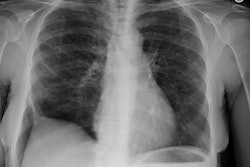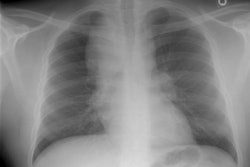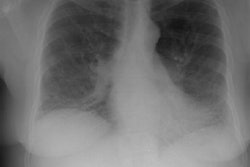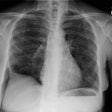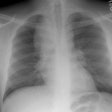Pulmonary angiitis and granulomatosis: radiologic-pathologic correlation.
Frazier AA, Rosado-de-Christenson ML, Galvin JR, Fleming MV
Five distinct clinical syndromes of pulmonary angiitis and granulomatosis
are currently recognized: Wegener granulomatosis,
lymphomatoid granulomatosis, necrotizing sarcoid granulomatosis, bronchocentric
granulomatosis, and allergic angiitis and
granulomatosis (Churg-Strauss syndrome). Patients typically present
in middle age with fever, cough, hemoptysis, dyspnea, or
chest discomfort. Upper airway involvement such as sinusitis suggests
Wegener granulomatosis. Medical renal disease is
associated with Wegener granulomatosis and Churg-Strauss syndrome.
Asthma may be present in bronchocentric
granulomatosis and Churg-Strauss syndrome. Pathologic examination of
these entities demonstrates vasculitis, granulomatous
inflammation, and parenchymal necrosis. The radiologic manifestations
of pulmonary disease are varied, but the most typical
appearance is that of multiple nodules or masses that may demonstrate
cavitation. Diffuse multifocal air-space opacities with or
without cavitation may also be seen. Pulmonary hemorrhage is a well-known
presenting manifestation of Wegener
granulomatosis and, less commonly, of Churg-Strauss syndrome. Because
of the multifocal lung involvement in these diseases,
pulmonary metastases and infectious causes are often considered in
the differential diagnosis. Affected patients are treated with
cytotoxic agents and corticosteroids. The prognosis is variable, depending
on the specific syndrome, but may be favorable in
the absence of significant complications.
